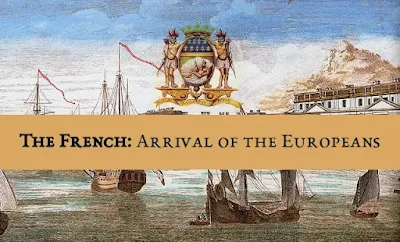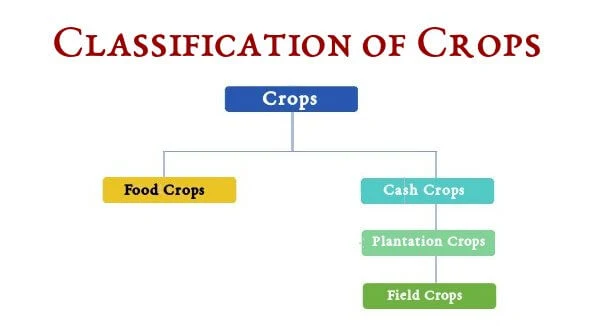The French were the last Europeans to come to India for trade. In Kerala, the French established the first fort at Thalassery in 1670. However, they could not compete with the English in Thalassery.
Later in 1702, they built a warehouse at Punnol (Kannur). But their business did not improve there either.
In 1722, the French Company obtained the right to erect a trade station in Mahi (Mayyazhi) from King Kadathanad (also known as Vadakara Vazhunnor). To secure their trading interests, they also erected a fort (St. George fort) at Mahi.
They established their foothold at Mahi in 1725. However, unlike the African continent, they were unable to achieve a breakthrough in India.
Let's have a bird's eye view of the French history of Kerala, their trade relations, the wars they fought, particularly the Carnatic wars, and so on.
Basic Facts
- The Last European force to reach India – The French.
- The French in Kerala is commonly known as – Paranthreesukar (പരന്ത്രീസുകാർ).
- The French East India Company (Compagnie des Indes Orientales) was founded by – Jean-Baptiste Colbert (1664).
- Ruler of France at the time – King Louis XIV.
- Originally founded in 1642 and was reorganized by Colbert in 1664.
- Headquarters of French in India – Pondicherry.
- The former name of Pondicherry – Fort Louis.
- The French purchased Pondicherry from – Sultan of Bijapur in 1673.
- Pondicherry was founded in the year – 1674.
- Founder of Pondicherry – Francois Martin.
- Father of Pondicherry – Francois Martin.
- First Governor of Pondicherry – Francois Martin.
- First French Governor-General in India – François Martin.
- The French established their first factory in India at – Surat (1668).
- Under the guidance of – Francis Caron.
- The second French Factory in India was at – Masaulipatam (1669).
- The permission to establish the French factory at Masulipatanam was granted by – Salabat Jang.
- The Mughal Emperor who issued the royal mandate allowing the French to set up a factory at Surat – Aurangzeb (September 4, 1666).
- Major trading centers of French East India Company – Mahi, Karakkal, Balasore & Qasim Bazar.
- The trading center of the French in Kerala was located at – Mahi (Mayazhi).
- The river which was formerly known as 'The English Channel of India' – Mayyazhipuzha.
- The year in which the French East India Company built a fort at Mahi – 1724.
- The year in which the French captured Mahi in – 1725.
- The French captain who aided the capture of Mahi from the King of Kadathanad – Bertrand-François Mahé, Comte de La Bourdonnais.
- Major French bases in India – Mahi (1725), Karaikal (1739), Yanam (Andhra Pradesh, 1723), Chandranagar (West Bengal), Pondicherry.
- The year in which the French left India – 1954.
- Pondicherry was captured by the Dutch from French EIC in – 1693.
- Name the treaty by which Pondicherry was restored to the French – Treaty of Ryswick (1697).
- Pondicherry was annexed to Indian Union on – November 1, 1954.
The Anglo-French Feud
The Carnatic Wars
First Carnatic War (1746)
- Date – 1746 to 1748.
- Location – Carnatic region, South India.
- Fought Between – The French & the English.
- The French – Joseph François Dupleix (Governor-General), Admiral La Bourdonnais (the French governor of Mauritius) &
- The English – Major Stringer Lawrence (British) along with Anwaruddin Khan (Nawab of the Carnatic).
- Main Event – the Battle of St. Thome (in Madras).
- The English territory that was captured by the French in the First Carnatic War – Madras.
- The treaty that ended the First Carnatic War – Treaty of Aix-la-Chapelle (1748).
- Also known as the Treaty of Aachen.
- The Indian territory returned to the British under the Treaty of Aix-la-Chapelle – Madras.
- while the French got their territories in North America.
Second Carnatic War (1748)
- Date – 1748 to 1754.
- Location – Carnatic region, South India.
- Fought Between – The French & the English.
- Reason – Succession dispute in Hyderabad and Karnataka.
- Nizam-ul-Mulk, the Mughal governor of the Deccan and Nawab of Hyderabad died in 1748 which raised succession disputes between:
- Chanda Sahib, the son-in-law of a previous Nawab of the Carnatic, Dost Ali and Anwar-ud-Din &
- Nasir Jang, the son of the Nizam, and Muzaffar Jang, the grandson of the Nawab.
- The British forces in the Second Carnatic War were led by – Robert Clive.
- The treaty that ended the Second Carnatic War – Treaty of Pondicherry (1754).
- Result –
- The British strengthened their grip in southern India.
- Muhammad Ali Khan Walajah became the Nawab of the Carnatic.
- Joseph François Dupleix, the French governor general was recalled by France and Charles Godeheu replaced him.
Third Carnatic War (1758)
- Date – 1758 to 1764.
- Reason – The Seven Years' War in Europe between Britain and France.
- The Travancore King who died in the year 1758 – Marthanda Varma.
- The French governor who got defeated in the Third Carnatic War – Thomas Arthur, Comte de Lally.
- The English governor who defeated the French – General Eyre Coote.
- The treaty that ended the Second Carnatic War – Treaty of Paris (1763).
- Chandan Nagar, Mahi, and Pondicherry were restored to France.
- Result – The English established their supremacy over the Indian subcontinent.
Battle of Wandiwash
- Date – 1760.
- Location – Vandavasi, Tamil Nadu.
- Also known as 'the Plassey of the south.'
- The decisive battle that led to the downfall of the French in India.
- Fought Between – General Eyre Coote of the English & Thomas Arthur, Comte de Lally.
- British won the Battle of Wandiwash on – January 22, 1760
Mahi Liberation Movement / Mayyazhi Vimochan Samaram
- The year in which the Mahi Liberation Movement happened – 1948.
- Leader of the Mahi Liberation Movement – I. K. Kumaran Master.
- The French suppressed the Mahi Liberation Movement on – October 28, 1948.
- The year in which the French left Mahi – July 16, 1954.
- The first Administrator of Mahe after Indian independence – I. K. Kumaran Master.
- Mayyazhi/Mahe Gandhi – I. K. Kumaran Master.
📝SideNotes:
- English Channel – an arm of the Atlantic Ocean that separates England and France.
- First Indian to swim across the English Channel – Mihir Sen (1958).
- First Indian/ Asian woman to swim across the English Channel – Arati Gupta' Saha (1959).
- First Woman sportsperson to win the Padma Shri – Arati Gupta' Saha (1960).
- The strait that separates England and France – Dover Strait.
- The smallest district in India – Mahi.
- A district that is not in Kerala despite the fact that it is a Malayalam-speaking region inside Kerala – Mahi.
- Mahi is a part of – Puducherry.
- Ang Lee's 2012 adventure drama 'Life of Pi,' was filmed in – Puducherry.
- Eyebrow of the Arabian Sea – Mahi.
- മയ്യഴിയുടെ കഥാകാരൻ – M. Mukundan.
- The Malayalam novel 'Mayyazhippuzhayude Theerangalil' was written by – M. Mukundan.
- Name the district of Kerala which surrounds Mahi on 3 sides – Kannur.









Post a Comment
Post a Comment